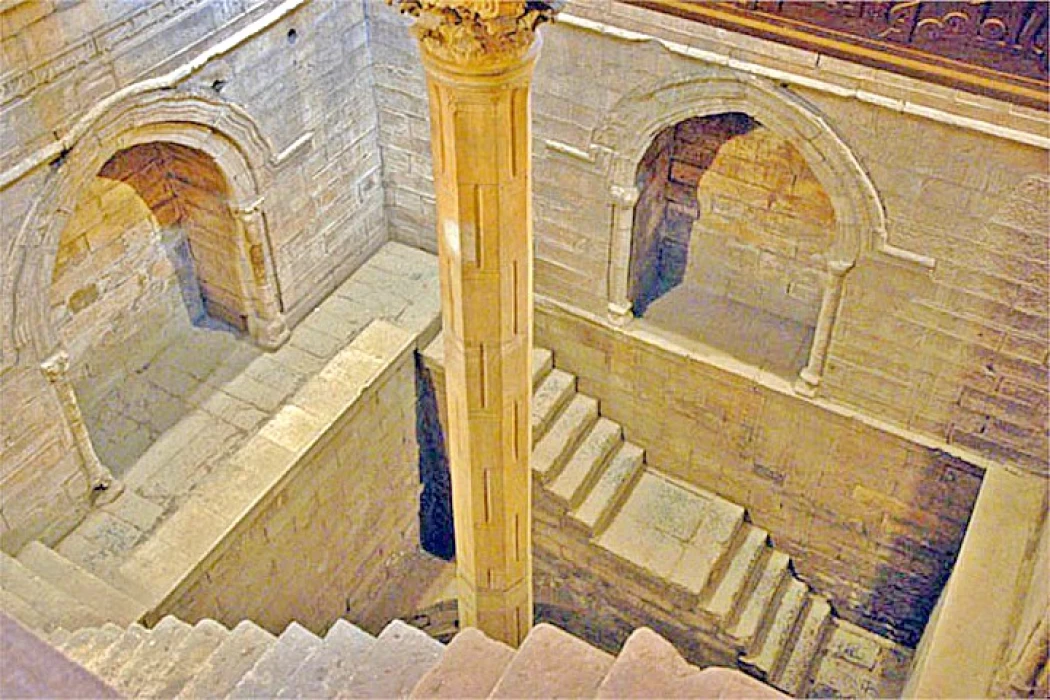
Cairo's Nile Scale, Egypt's second oldest Islamic monument
Facts about The Roda Nilometer in Cairo
The Nile gauge at the southern end of Rawda Island in Cairo, Egypt. It was used to measure the flooding of the Nile, to determine taxes for the next agricultural year, and to prepare for the Nile Feast.
The Nile gauge was renovated in 247 AH - 861 AD by order of the Abbasid Caliph Al-Mutawakkil in Fustat (Al-Rawda Island). The lower floor is circular in shape, topped by a square wall whose side length is greater than the diameter of the circle, and above it is the upper square whose side length is longer than the side length of the middle square.
The well of the gauge was built of carved stone, and inside it there is a large, deep basin to which a marble staircase descends on the circle, and in the center of the basin is a standing marble column, with drawings, numbers, arms and pigments, and on top of the column is a numbered building made of stone, which is colored and painted with gold, lapis lazuli and all kinds of elaborate pigments.
Some of the inscriptions and marble coverings of the gauge have been lost as a result of the restoration of the gauge. On the basis of the Nile gauge, tribute was collected and prices of goods were determined. The Nile water entered the gauge through a hole in the wall of the gauge, and the water level was determined.
The Nile gauge in Rawda is one of the Abbasid constructions, and Egyptians have known since ancient times to build gauges throughout the country to recognize the height of the Nile due to its close relationship with land irrigation and the collection of revenue. Arabic sources refer to many of the gauges that were established in Egypt after the Arab conquest, including: Muawiya bin Abi Sufyan( 41-60 e): Anasna scale .
Abdulaziz bin Marwan: Established a scale in Helwan in 80 H. Osama ibn Zayd al-Tanufi, the Kharaj factor, built a gauge in Rawda during the reign of al-Walid ibn Abdulmalik (86-96 H) in 92 H. Suleiman ibn Abdulmalik canceled its work and built another one in 97 H, five years later. In 247 H, Caliph al-Mutawakkil (232-248 H) ordered the construction of the gauge.














